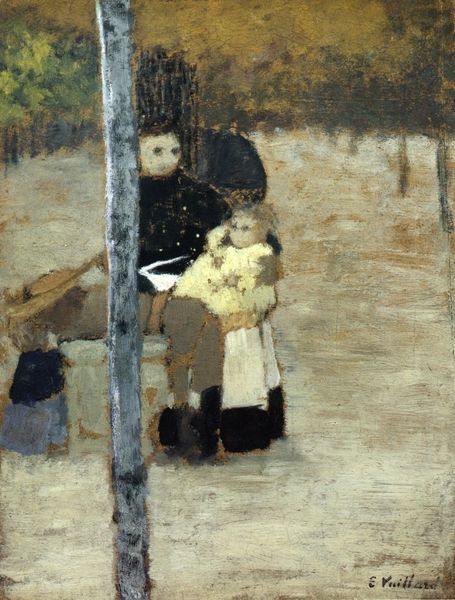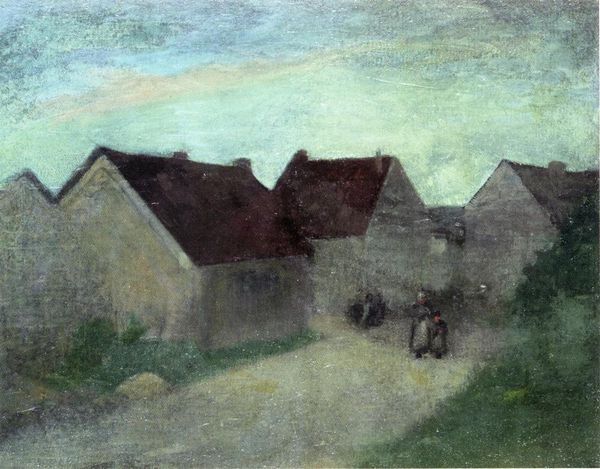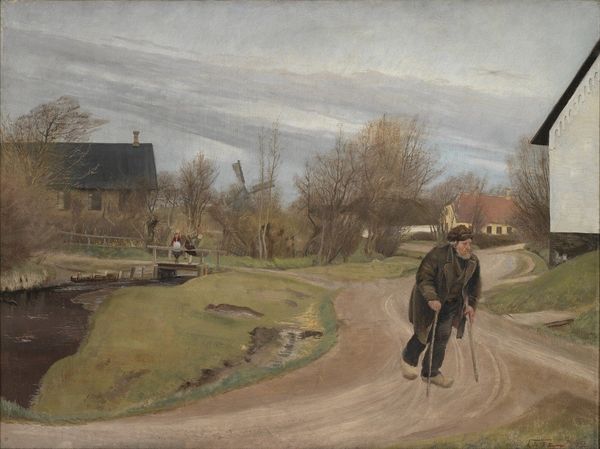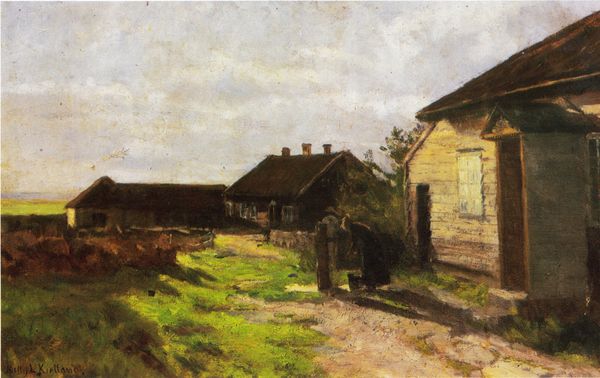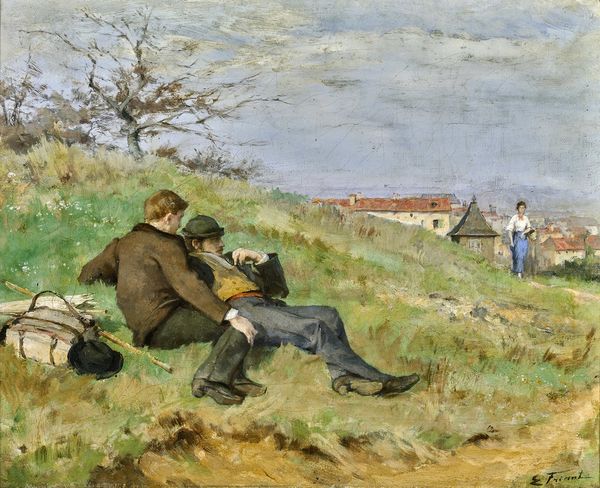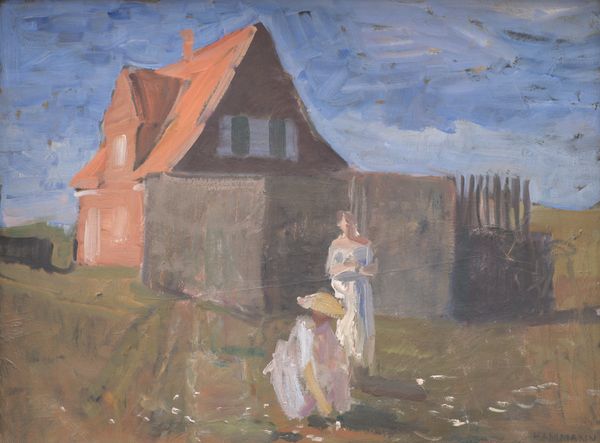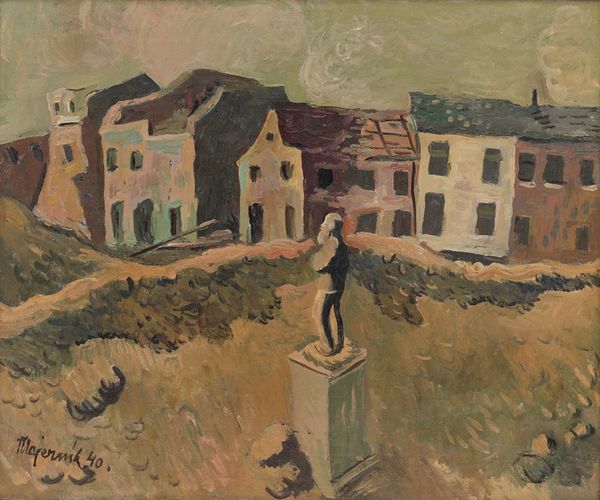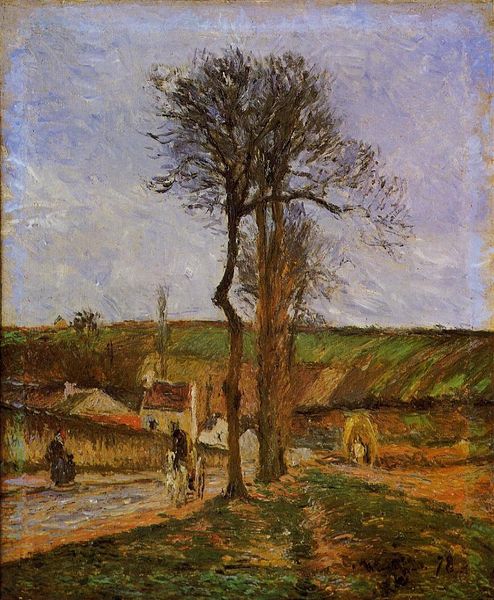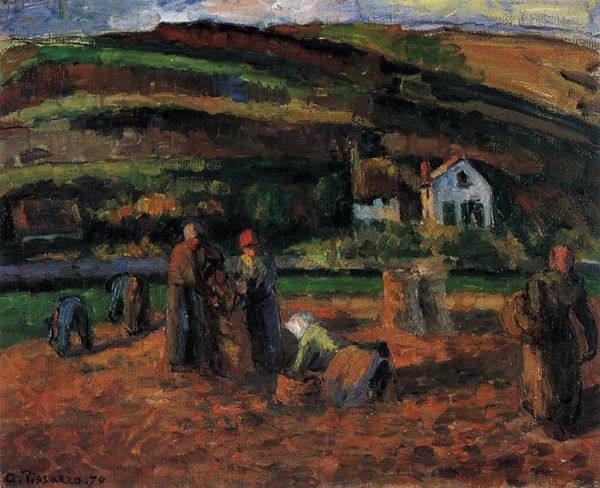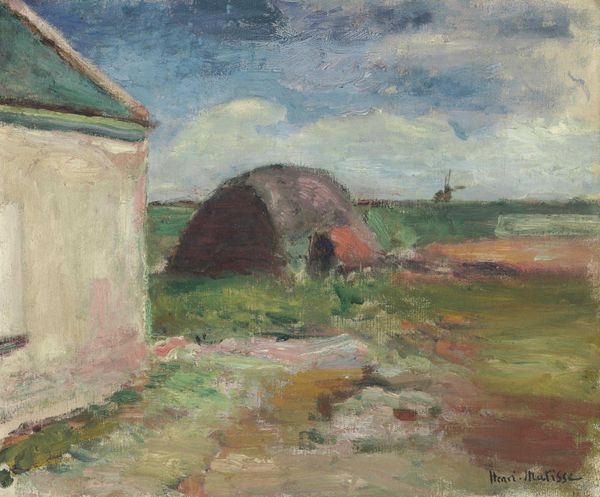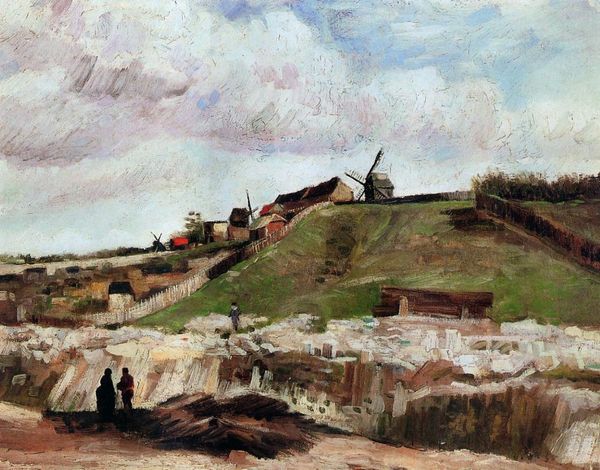
plein-air, oil-paint
#
portrait
#
plein-air
#
oil-paint
#
landscape
#
german-expressionism
#
charcoal drawing
#
oil painting
#
expressionism
#
northern-renaissance
Dimensions: 60.5 x 44.5 cm
Copyright: Public domain
Curator: This is Paula Modersohn-Becker’s "Two Boys on Moorkanal," painted around 1900. It's an oil painting that seems to capture a moment in the northern German countryside. Editor: Oh, right away, it’s got that beautiful melancholic air, hasn’t it? The muted colors almost smell like damp earth and a cloudy afternoon. The boys, especially the one in front, feel incredibly present. Curator: Yes, she painted this during a time when she was deeply influenced by the artistic community in Worpswede, an artist colony focused on plein-air painting. It reflects a turn towards simpler, rural subjects. She really was investigating the social dynamic of landscape and its inhabitants, even at this stage. Editor: You can see that focus. The composition is really interesting—how the background sort of bleeds into these figures, like they're growing out of the very land. But it’s more than just observation, I think, it’s about… resonance. There’s almost an iconic quality. Curator: Modersohn-Becker was keenly aware of depicting figures that resonated beyond just the anecdotal. Her artistic production also coincided with rapid industrialisation in other parts of Germany, creating anxiety in the rural North and fueling the revival of peasant subjects in fine art. The painting embodies that shift and sentiment. Editor: Right. And what gets me is that she finds a quiet power in those two boys. They seem connected to something deeper than just their own lives. It reminds me a little bit of growing up in the country, but a very stylized, soulful version. I bet their mothers had a story, maybe a rough one, you can sense it, and it translates from life onto canvas in the subtlest details... their clothes, postures, all seem significant! Curator: Absolutely, she was quite radical in her exploration of form, often simplifying features, which moved towards early expressionism, while firmly grounding the work in a particular context and experience. It prefigures her more recognised later portraits. Editor: It’s remarkable how she manages to balance intimacy with universality, so each mark seems alive. And now knowing this work helps form a trajectory towards German Expressionism puts a slightly different twist to everything; it makes it feel a little edgy, unsettling in a wonderful way. Curator: Indeed. It makes you think about art's evolving role at the turn of the century as well as its ability to portray history from a range of perspectives. Editor: Exactly. I find myself thinking about my family—a great starting point to reflect upon my relationship with the people in my surroundings. It's strangely profound, actually, how much can come from just gazing at those two stoic, slightly damp boys.
Comments
No comments
Be the first to comment and join the conversation on the ultimate creative platform.

